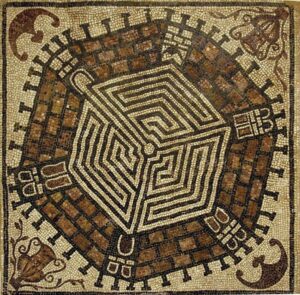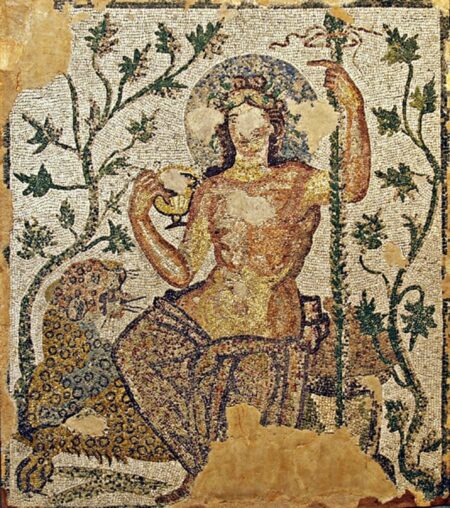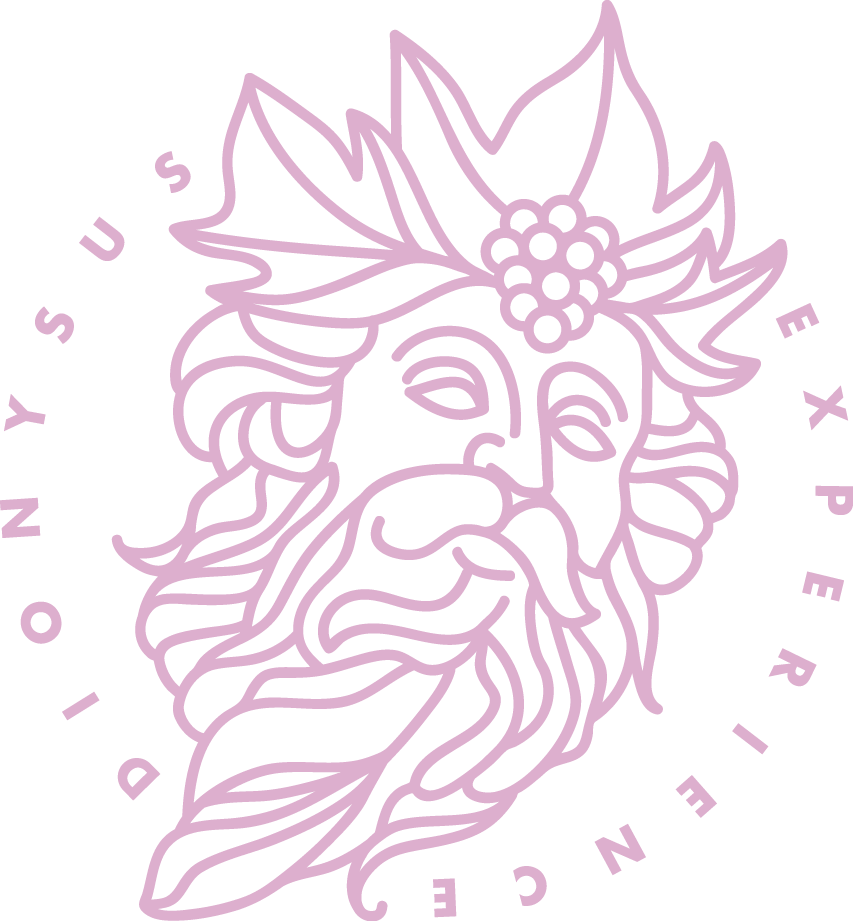“In ancient times, Bacchus’ festival was celebrated quite simply but joyfully; a crier preceded, carrying wine, followed by a goat, and another carrying a basket of figs.”
Plutarch
Later, this moderation faded, and people indulged in unrestrained ecstasy, accompanied by the raucous sounds of instruments, shouting “euoi.” Animals were torn apart, and raw meat was consumed. Hence, Dionysus later acquired names like Bakchos (noisy), Bromios (boisterous), and Euios (the one who shouts: euoi).
In these nocturnal festivities, known as Nyktelia, the leading role was played by inspired women known as Maenads, Bacchantes, Thyads, Bassarids, or Bistonids. Art depicted them with an expression of ecstasy, hesitant movements, tilted heads, and disheveled hair.
Accompanied by nymphs, Bacchantes, Sileni, and Satyrs frolicking and cavorting around him, Dionysus would sit on a lion or in a chariot drawn by tigers or panthers. His attendants wore wreaths of vine leaves or ivy on their heads, held a thyrsus, snake, or staff wrapped in vine leaves in their hands.
Among the festivals dedicated to Dionysus were the Small and Great Dionysia, Lenaia, and Anthesteria. Dithyrambs were sung during these festivals, evolving over time into tragedies and comedies, performed in Dionysus’s theater. As a god of tragedy, he was accompanied by the Muses, with a peak on Mount Parnassus dedicated to him. Every three years, celebrations of Thracian origin were held on that peak, featuring intoxicated music and dance, and merry women dressed as Bacchantes. Similar women’s festivals were called orgies in Thrace and Bacchanalia in Rome, and they were banned in 186 BCE due to their immorality.
Dionysus was initially depicted as a serious figure with a beard, later transformed into a youthful character with almost feminine features, typically wearing a wreath of vine leaves or ivy. His symbols were the thyrsus and a cup, and his sacred animals included the lion, tiger, panther, bull, and goat. Notable plants associated with him were grapes, ivy, and laurel.
Numerous findings in the territory of present-day Serbia feature depictions of Dionysus, unequivocally indicating the cultivation of the Dionysian cult in the Balkans from ancient times. Lastly, a mosaic of Dionysus Triumphator from the late antique villa in Gamzigrad (3-4th century) introduces new iconographic elements relevant to its time of creation. Dionysus, flanked by vine branches, sits on a low platform (klyne). He wears a flower wreath on his head and a nimbus made of colorful glass paste. In his left hand, he holds a thyrsus wrapped in vine leaves, and in his right, a kantharos. The deity is nude, draped in a garment covering the body from the groin to the feet. A leopard with an uplifted head lies to his right. The conventional iconography is enriched here by a nimbus around Dionysus’s head, and the customary companion, the panther, is replaced by a leopard. Cvetković emphasizes that this represents a new type of Dionysus, a youthful deity with a nimbus, dignified on a throne. Srejović sees in it the prototype of the composition of Christ on the throne or Orpheus and compares it with Christ in the mosaic from the mausoleum of Galla Placidia in Ravenna. This mosaic emphasizes Dionysus’s new triumphal nature, distinct from the god of wine. Srejović points out that Dionysus’s thyrsus resembles a royal scepter, and the kantharos in Dionysus’s right hand contains a divine substance. The nimbus, a luminous circle, has surrounded the heads of deities since the early classical period and Apulian vases, later extending to pre-Christian Rome, where it enclosed the heads of emperors. It symbolized the kingdom or divine world, or light. Occasionally, rays similar to sunbeams emanated from the nimbus. Therefore, it is no coincidence that the nimbus later became the attribute of martyrs and saints, primarily Christ. The appearance of the nimbus in this composition is not uncommon. Numerous examples exist, especially in the eastern part of the Empire, where a deity with a nimbus around the head is depicted. On a fresco from Pompeii, now known only through literature, there was a similar depiction of Dionysus. He was seated on a rock, wearing a purple cloak over his legs, holding a thyrsus in his left hand and a kantharos in his right, while a panther reared on its hind legs beside him. As evident from the above, the mosaic from Gamzigrad effectively illustrates the changes occurring in iconography and the culture of that era.

Beautiful and unusual depiction of the labyrinth, 4th century AD Roman floor mosaic discovered at remains of imperial palace at Gamzigrad – Felix Romuliana archaeological site, vicinity of Zaječar, eastern Serbia. The mosaic is depicting hexagonal labyrinth surrounded by fortified walls and defensive towers. Gate of the labyrinth is within the tower in upper left corner and it leads to the only corridor which meanders around to the center of the labyrinth.



